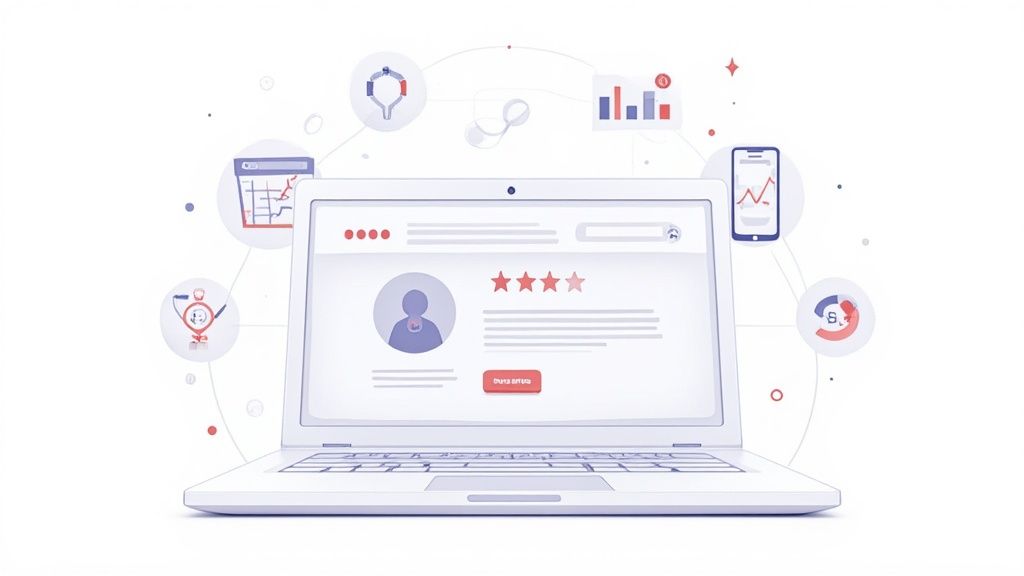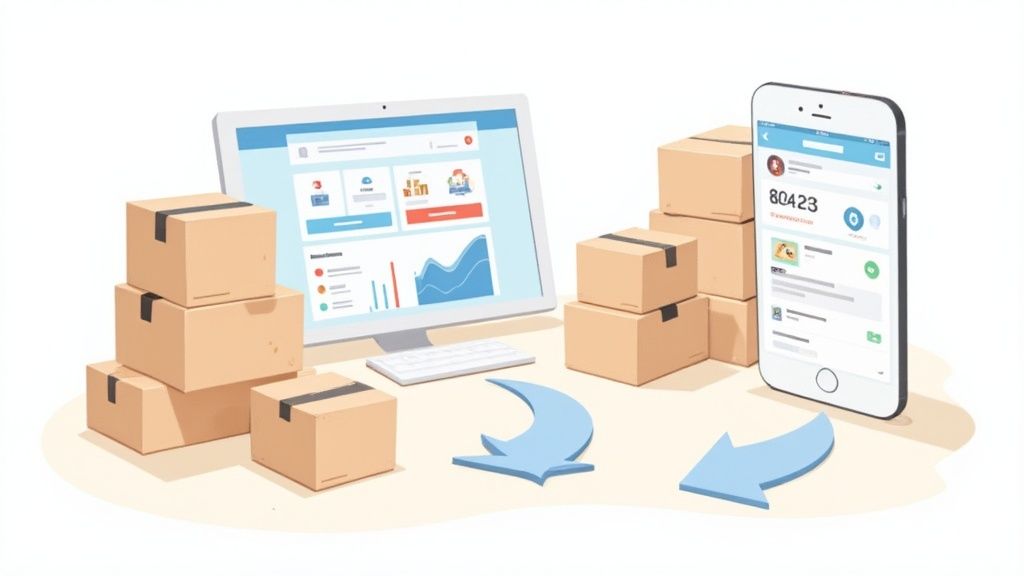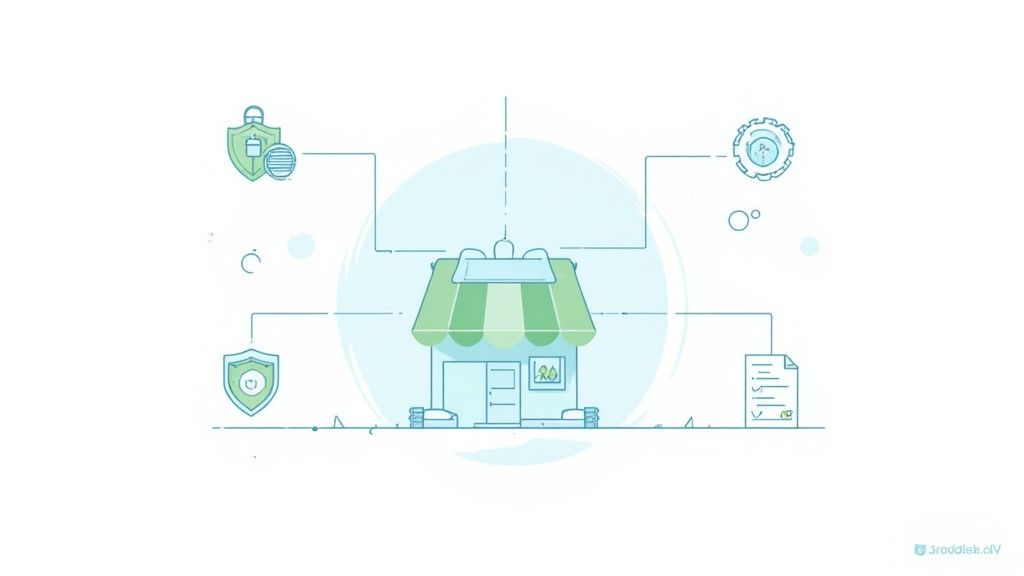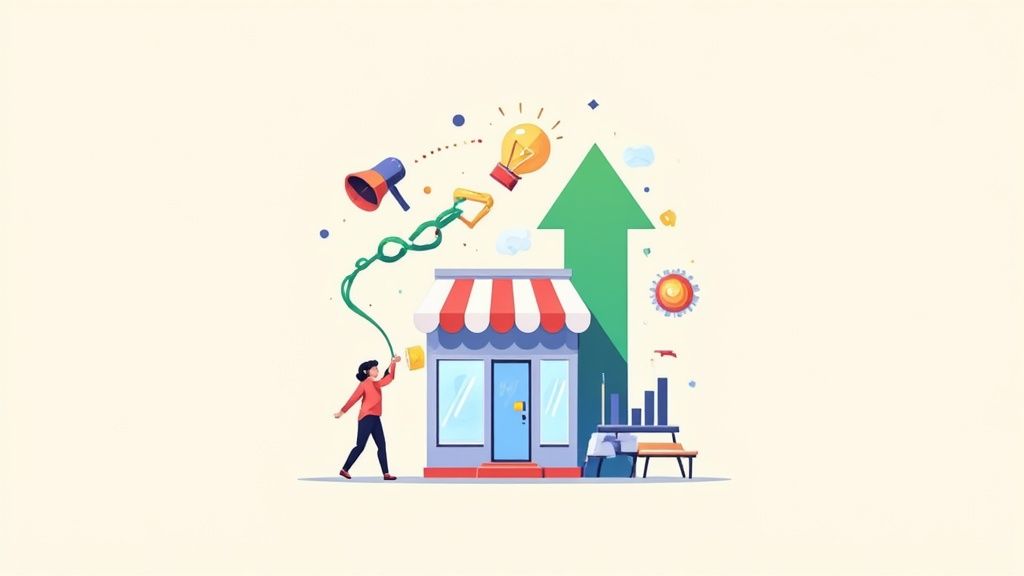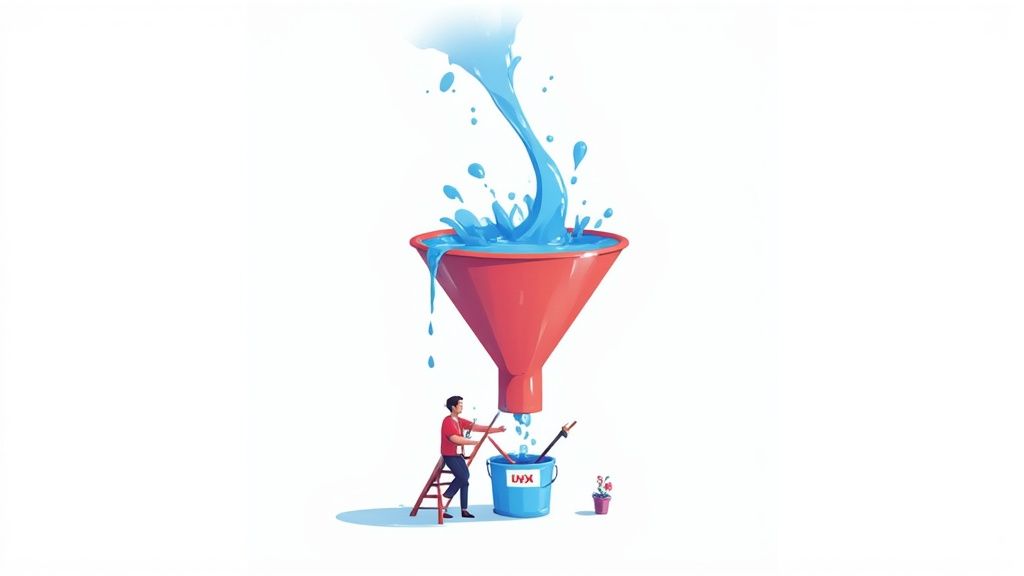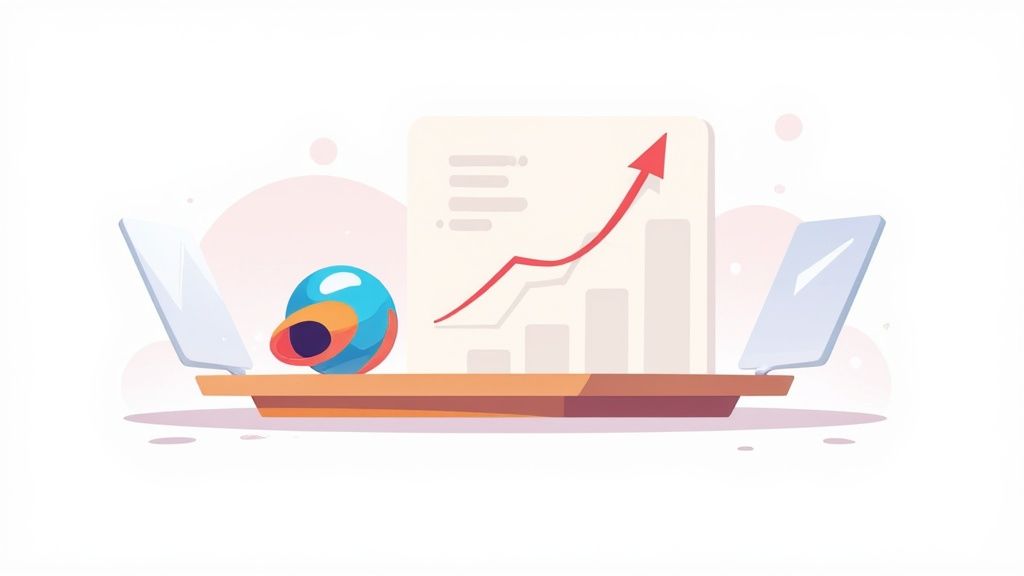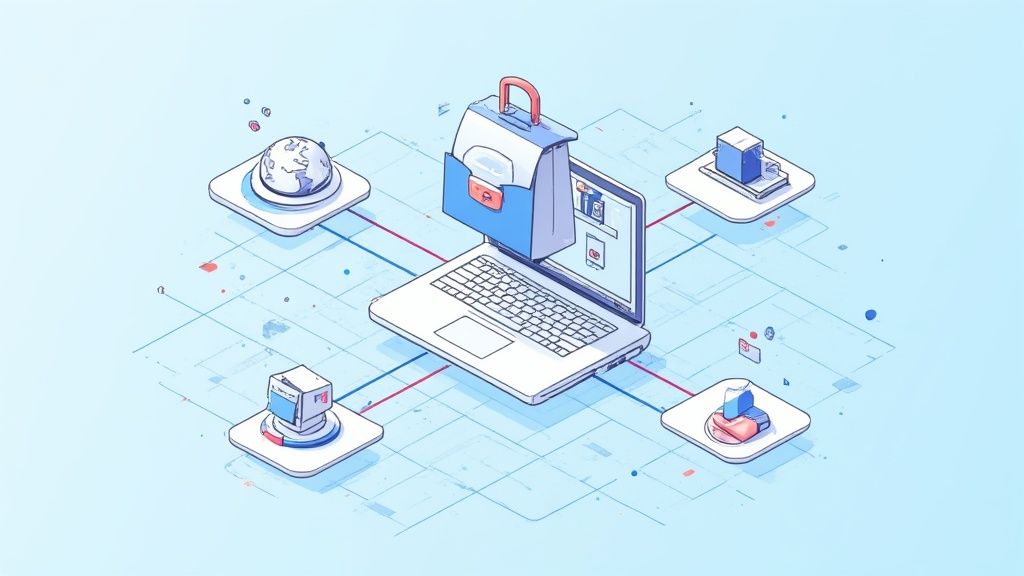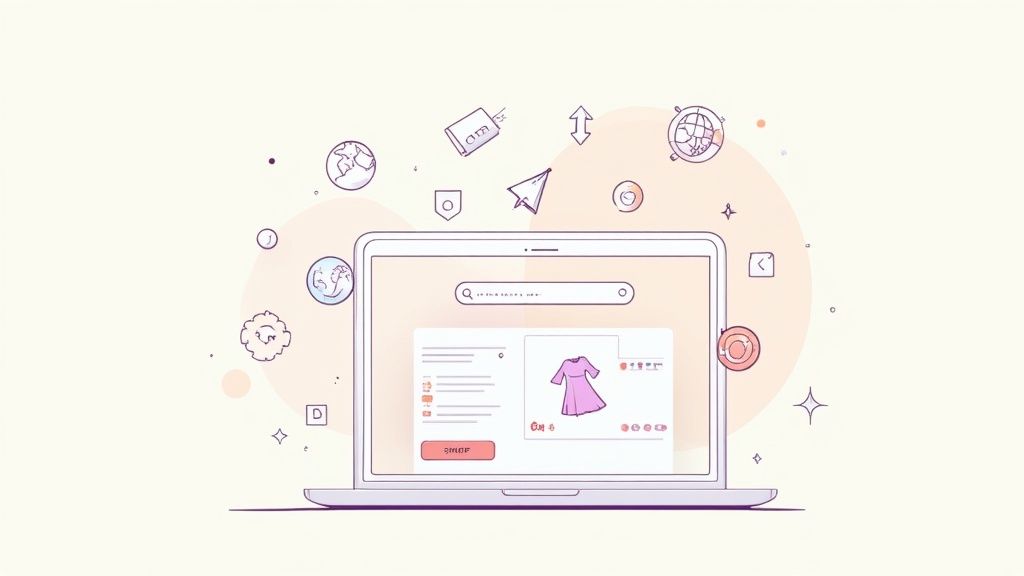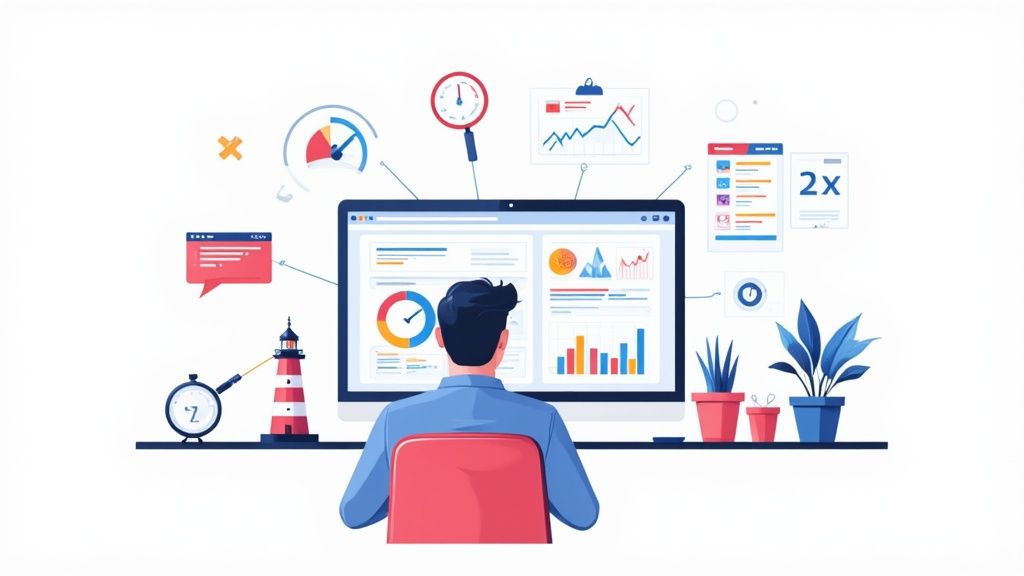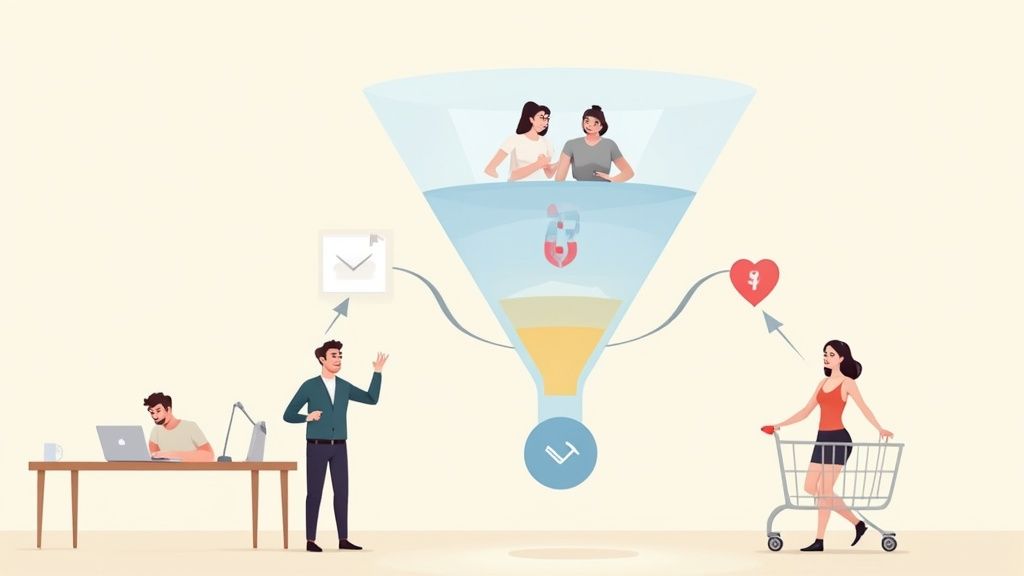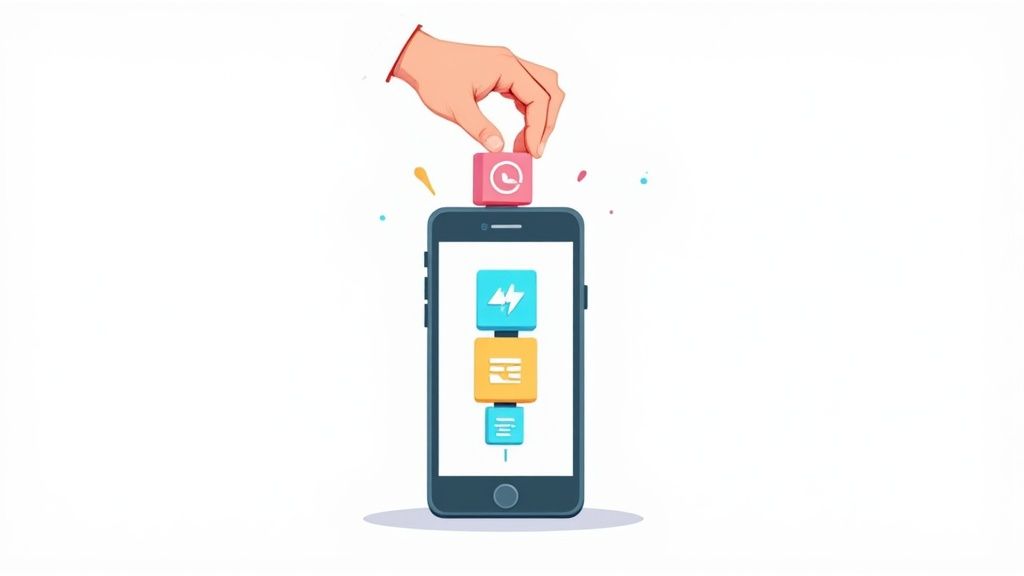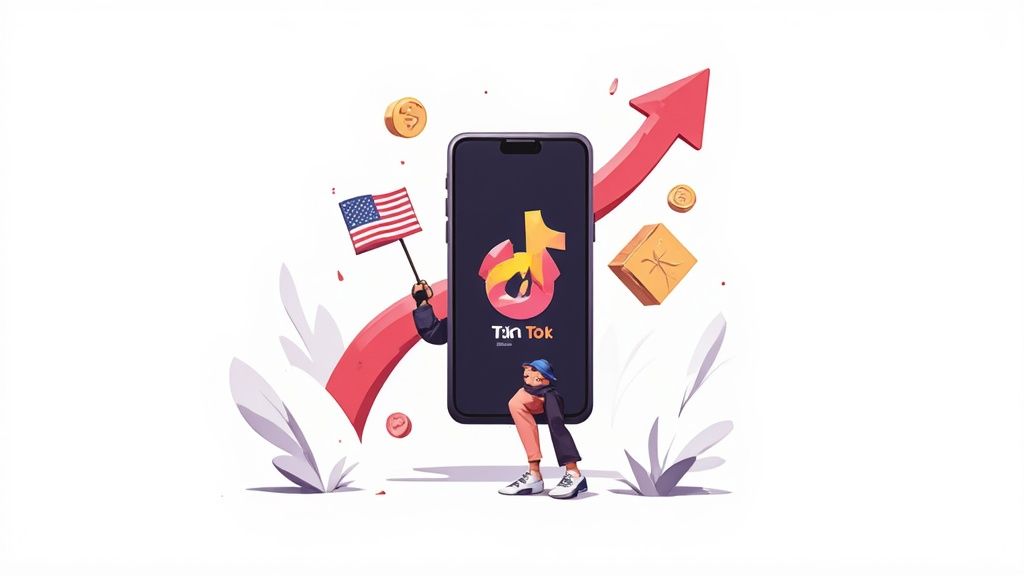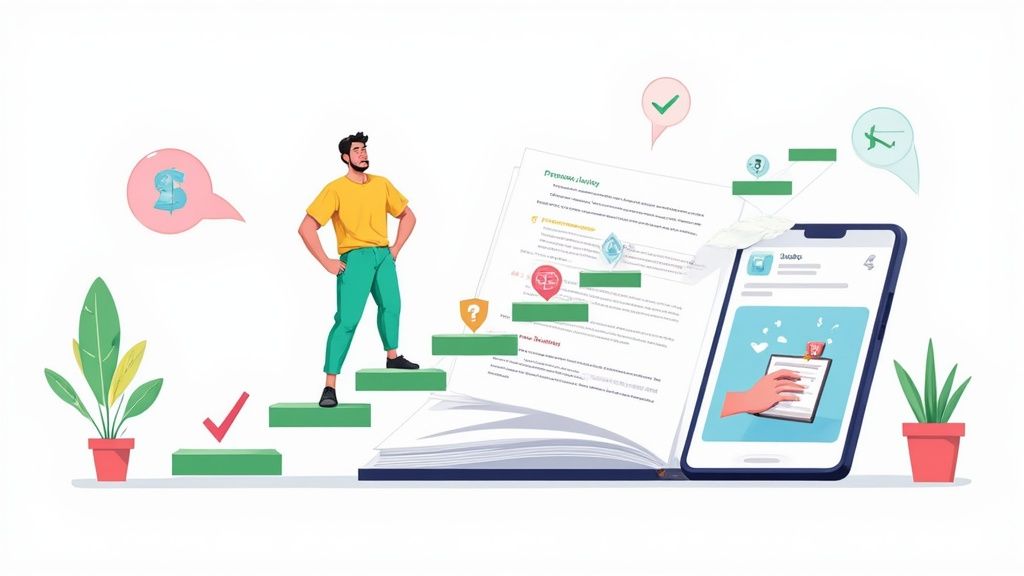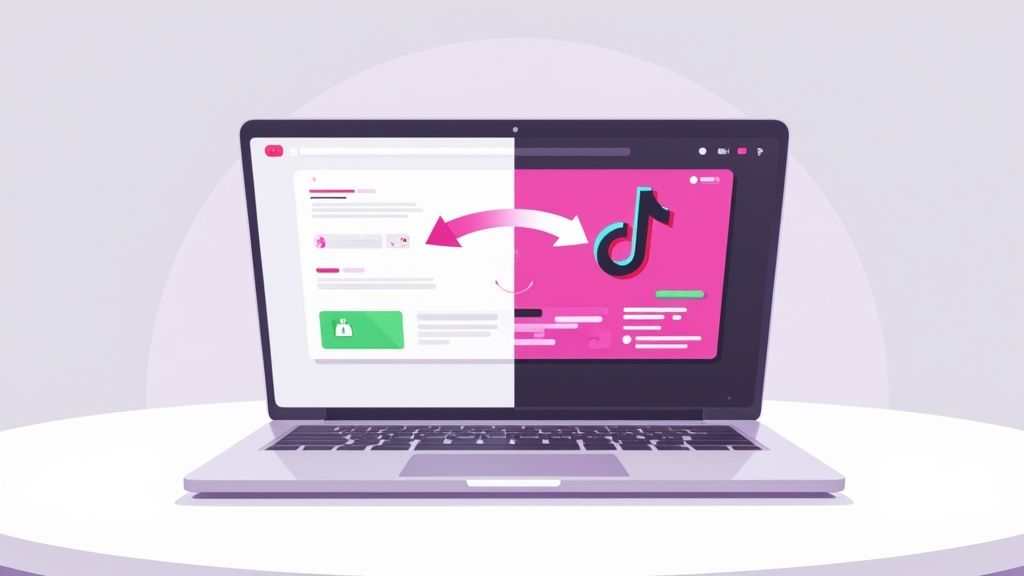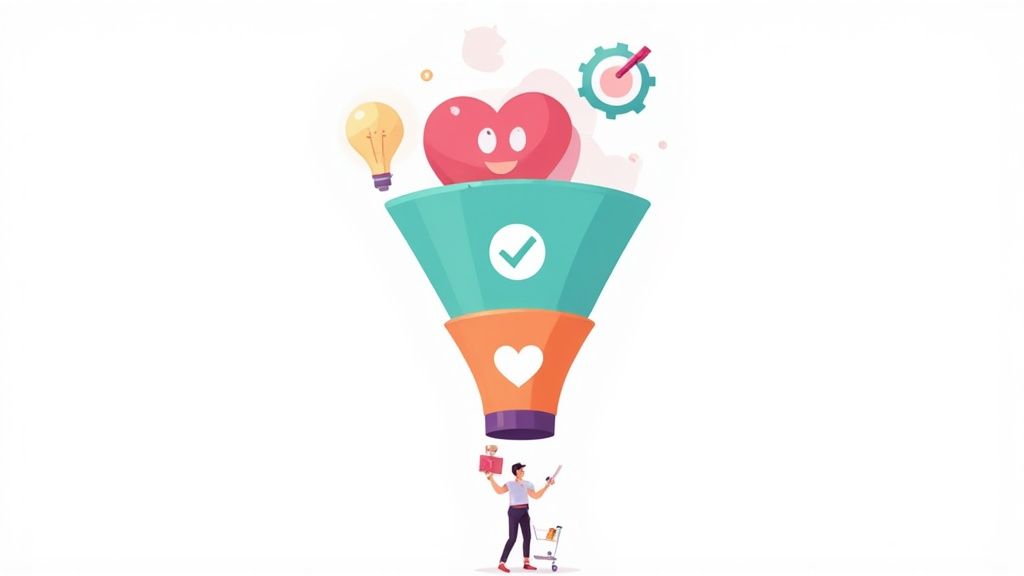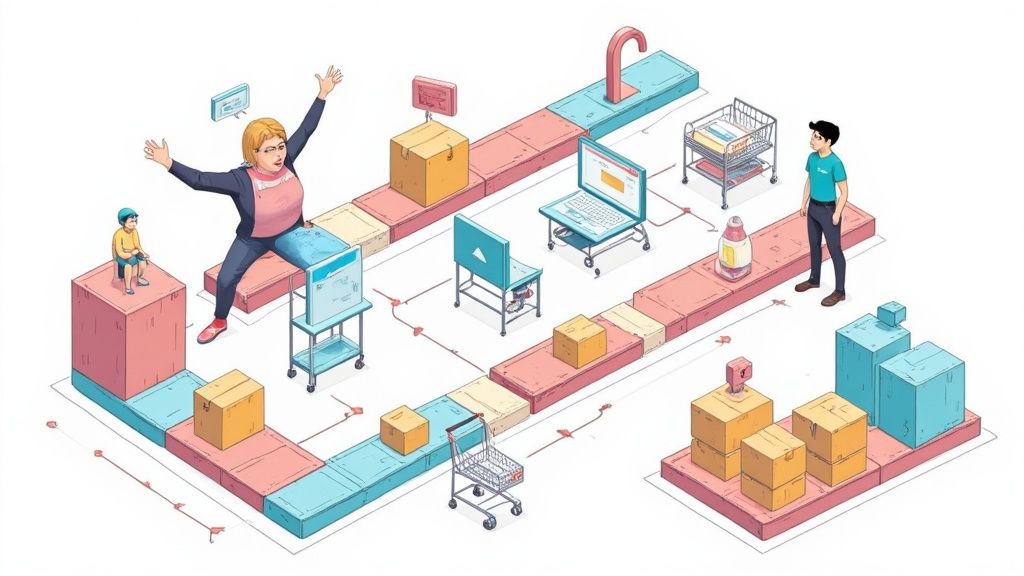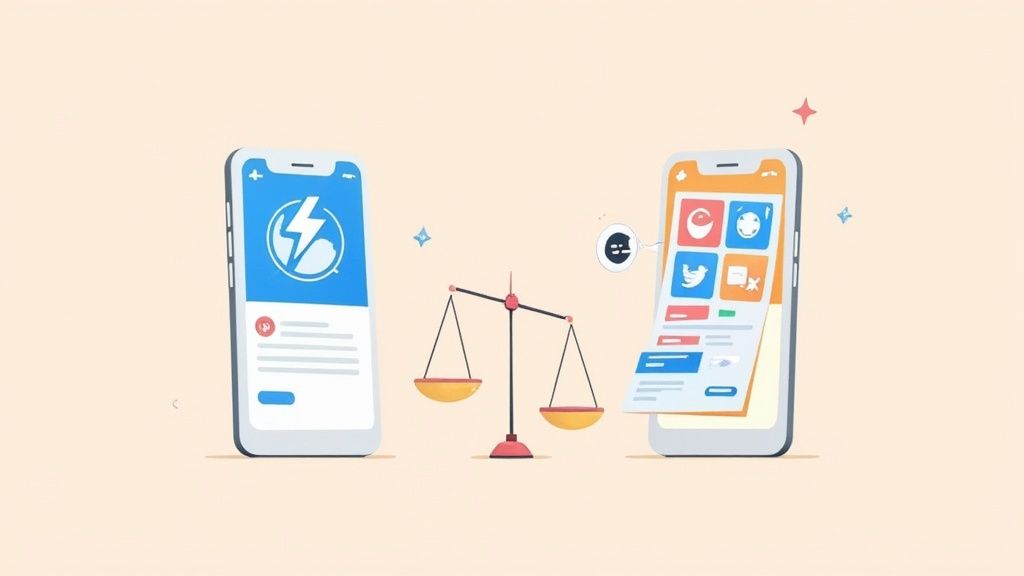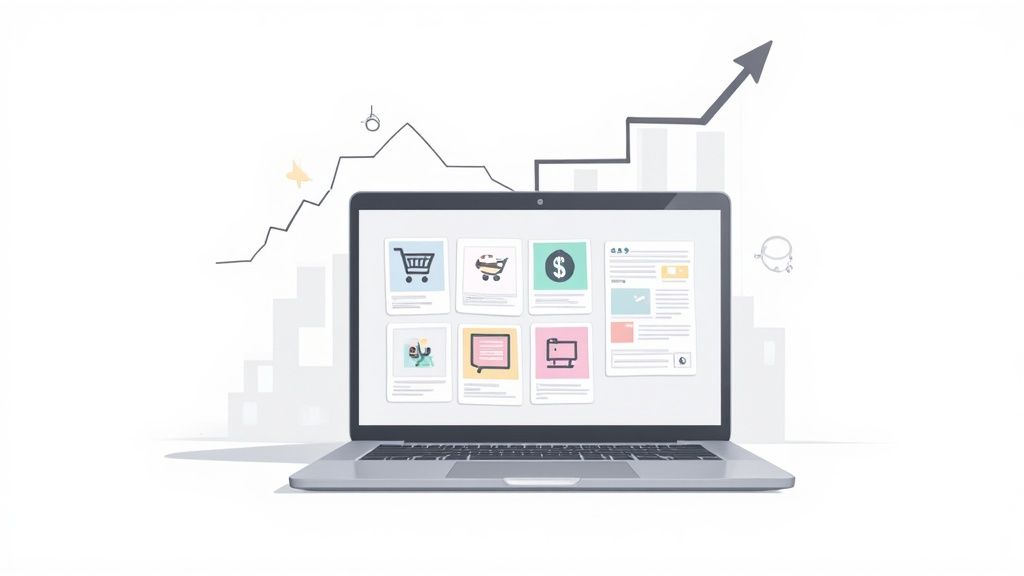
Unlocking Growth with Smart A/B Testing
A/B testing has become a core practice for successful eCommerce businesses, from growing Shopify stores to major brands. This proven method helps companies make confident decisions backed by real data rather than gut feelings. With carefully designed tests, you can measure exactly what works and continuously improve based on solid results.
Creating an effective A/B testing program requires understanding key principles and applying them strategically. Just as scientific experiments follow strict protocols, successful A/B testing relies on clear hypotheses, statistical validity, and systematic learning from results. The goal isn't just to run tests - it's to design meaningful experiments that generate actionable insights and feed into ongoing optimization.
In this guide, we'll explore 8 essential A/B testing best practices that can help transform basic testing into a powerful driver of business growth. Whether you're looking to boost conversions, increase revenue, or outperform competitors, these proven principles will help you get more value from your testing program. Let's dive into the practical steps for taking your optimization efforts to new heights.
Some key benefits we'll cover:
- Creating statistically valid experiments
- Designing tests that deliver clear insights
- Building a systematic optimization process
- Measuring and tracking meaningful results
- Turning test data into business improvements
1. Clear Hypothesis Formation

Strong hypotheses are essential for successful A/B testing. While hunches can point you in the right direction, you need a clear framework that defines what you're testing, why you're testing it, and what results you expect. Without this foundation, A/B tests become guesswork that wastes time and resources.
As companies rely more on data to make decisions, having a structured approach to testing has become crucial. Random testing rarely leads to meaningful, repeatable improvements that impact the bottom line.
A solid hypothesis should include:
- Specific metric-based goals: Focus on concrete numbers like "increase average session duration by 15%" rather than vague goals like "improve engagement"
- Documented expected outcomes: Write down exactly what you think will happen if your hypothesis is correct
- Clear success criteria: Define upfront what results would prove your hypothesis right or wrong
- Business impact projection: Calculate how success would affect key business metrics. For example: "A 15% longer session duration should boost conversions by 5%, generating $X more revenue"
Benefits:
- Guides test design: A clear hypothesis helps you create focused tests that measure the right things
- Simplifies analysis: You can easily compare actual results against your predictions
- Keeps tests business-focused: By connecting hypotheses to business goals, you ensure tests drive real value
- Prevents wasted effort: Clear hypotheses stop you from running random tests that lack purpose
Drawbacks:
- Takes time to develop: Creating strong hypotheses requires research, data analysis, and getting stakeholder input
- Needs stakeholder approval: Large organizations often require sign-off from multiple teams
- May constrain exploration: Too rigid a framework could limit discovering unexpected insights
Real-World Examples:
HubSpot carefully documents all their growth experiments, including hypotheses and predicted outcomes. While Booking.com keeps their exact testing framework private, they've shared how hypothesis-driven testing drives their growth.
Implementation Tips:
- Use this format: "If we [make this change], then [this metric] will [increase/decrease] by [amount] because [reasoning]"
- Track multiple metrics: Focus on one primary metric but monitor others to understand broader impact
- List key assumptions: Document what you're assuming to help analyze results accurately
By building tests on clear hypotheses, eCommerce businesses of all sizes can run focused experiments that drive meaningful growth. This systematic approach creates a strong base for making smart, data-backed decisions.
2. Statistical Significance Planning

Planning for statistical significance is essential for running effective A/B tests. Before launching any experiment, you need to determine the right sample size and test duration to get meaningful results. Without proper planning, you risk making decisions based on random fluctuations rather than real data.
Here are the key elements you need to understand:
- Power Analysis: This helps calculate how many visitors you need to detect meaningful changes in your metrics
- Minimum Detectable Effect (MDE): The smallest improvement that matters for your business goals (e.g., a 0.5% conversion increase)
- Confidence Level: How certain you want to be about your results, typically aiming for 95% confidence
- Sample Size Tools: Popular platforms like Optimizely, VWO, and Google Optimize include calculators to help determine needed sample sizes
Let's look at a real example: A headphone retailer tests a new product page design. Without proper planning, they might see an early spike in sales and declare success too soon. But with the right sample size, they discover the initial boost was just random chance.
The science behind statistical significance comes from academic research. Testing platforms have made these concepts accessible to businesses of all sizes by building in sample size calculators and analysis tools.
Key Tips for Success:
- Always target 95% confidence or higher
- Run tests for at least one full business cycle
- Consider seasonal patterns in your data
- Use built-in calculator tools from testing platforms
Benefits:
- Gets reliable data before making decisions
- Reduces false positives
- Leads to better business choices
Challenges:
- Tests may need to run longer
- Takes time to learn the concepts
- Requires sufficient website traffic
While it requires some patience and learning, statistical significance planning helps you avoid costly mistakes. By following these principles, both large and small eCommerce businesses can run tests that deliver trustworthy insights.
3. Control Group Isolation: The Foundation of Reliable A/B Testing
A solid testing program needs a clean control group. Without proper isolation between your test and control groups, your results become meaningless - you won't know if changes in behavior came from your test or outside factors. For online stores and eCommerce brands, acting on flawed test data means wasted money and missed opportunities.
Think about testing a new checkout button color. If control group users accidentally see the test version, their behavior changes and corrupts your baseline metrics. You might wrongly conclude the new color failed when really the data was just muddied. Proper isolation prevents this contamination and gives you clear, accurate comparisons.
Essential Components for Control Group Isolation:
- User tracking with cookies: Unique identifiers ensure users consistently see either the control or test experience
- Traffic splitting: Carefully dividing traffic between groups maintains proper sample sizes and enables segmented analysis
- Multi-device consistency: Users need the same experience across desktop, mobile and tablet - often through account-based tracking
- Clean data collection: Rock-solid analytics implementation minimizes errors and maintains data quality
Benefits of Proper Isolation:
- Clean baseline metrics for accurate measurement
- No data contamination between groups
- Clear comparison between control and test versions
Challenges to Consider:
- May reduce total test traffic volume
- Requires technical setup and integration
- Cookie-based tracking has limitations with device switching
Real Examples in Action:
- Amazon uses sophisticated tools to maintain strict isolation in their testing program
- Facebook's testing platform emphasizes clean user segmentation to run thousands of parallel experiments
Tips for Implementation:
- Look beyond cookies to options like logged-in accounts
- Monitor for any signs of cross-contamination between groups
- Document external events during tests that could impact results
- Run regular quality checks on your isolation mechanisms
Control group isolation isn't optional - it's what makes A/B testing work. By implementing these practices carefully, online stores can make confident decisions based on reliable data rather than contaminated results.
4. Multivariate Test Design
Multivariate testing (MVT) expands on A/B testing by letting you test multiple page elements at the same time. Instead of testing just one change, MVT helps you understand how different elements like headlines, images, and buttons work together to influence your page's performance.
For growing eCommerce sites, MVT offers deeper insights than basic A/B tests. While changing a single button color might give a small boost, testing button colors combined with different headlines could reveal major conversion improvements. MVT helps uncover these winning combinations.
MVT uses a systematic approach to test every possible variation combination. This reveals how elements interact - some combinations work great together while others clash. For example, a headline might perform well with one image but poorly with another. These insights help you truly understand what drives user behavior.
Tools like Google Analytics and Adobe Target have made MVT much more accessible. These platforms handle the complex testing and analysis, making MVT practical for data-focused eCommerce businesses of all sizes.
Real-World Example: Consider an online shoe store optimizing their product page. Using MVT, they test:
- Hero Image: Lifestyle photo vs Product-only photo
- Call to Action: "Buy Now" vs "Add to Cart"
- Product Description: Brief vs Detailed
This creates eight unique page versions (2 x 2 x 2), showing not just which individual elements work best, but which combination drives the most sales.
Benefits:
- Test multiple changes at once: Save time and traffic
- Find element synergies: Discover which changes work best together
- Faster optimization: More efficient than sequential A/B tests
Challenges:
- Need more traffic: Multiple variations require larger sample sizes
- Complex analysis: Results need deeper statistical understanding
- Longer test duration: Takes time to gather enough data
Tips for Success:
- Focus on key elements: Start with changes most likely to impact conversions
- Keep variations manageable: Too many options increase complexity and sample size needs
- Consider traffic levels: For lower-traffic sites, start with A/B tests before moving to MVT
MVT helps eCommerce businesses make smarter, data-driven decisions about their website changes. When done right, it reveals opportunities for major conversion and revenue gains.
Segmentation Analysis: A Strategic Approach to A/B Testing
A/B testing becomes much more powerful when you examine how different user groups respond to your test variations. Rather than looking only at overall results, segmentation analysis helps you discover valuable insights about specific audience groups and their unique preferences.
Why Segment Your A/B Tests?
The main concept is simple - break down your audience into meaningful groups and analyze how each responds differently to your test variations. A website change might work great for new visitors but poorly for returning customers. Without segmentation, you'd miss these important details that can guide your optimization strategy.
Key Segmentation Categories:
- Demographics: Age, gender, income level, education
- User Behavior: Purchase history, browsing patterns, engagement metrics
- Device Types: Desktop, mobile, tablet performance differences
- Location: Regional variations in preferences and response rates
Benefits of Segmented Testing:
- Group-Specific Insights: See exactly how different audiences react
- Smart Optimization: Create experiences customized for key segments
- Better Resource Planning: Focus budget on segments with highest potential
Challenges to Consider:
- Sample Size Requirements: Need more total visitors to get valid results per segment
- Added Complexity: Requires more advanced tools and analysis skills
- Segment Balance: Too many small segments can muddy the results
Real Examples in Action:
- Netflix tests interface changes and content recommendations across different viewer segments
- Spotify analyzes listening patterns by user group to optimize playlist features
Tips for Success:
- Plan Segments Early: Define your groups before starting tests to avoid bias
- Calculate Sample Needs: Use statistics tools to ensure enough data per segment
- Focus on Key Groups: Prioritize segments large enough to impact your bottom line
The Value of Segmented Testing
For online retailers, understanding different customer groups is essential. Segmentation transforms basic A/B testing into a precise tool for uncovering opportunities within specific audiences. Beyond just improving overall conversion rates, knowing which groups convert and why helps build sustainable growth. This detailed insight helps businesses of all sizes make smarter optimization choices based on real user data.
6. Test Duration Optimization
The length of your A/B test plays a key role in getting reliable data to make smart business decisions. Tests that are too short often give misleading results based on temporary changes, while overly long tests waste time and delay implementing successful changes. Finding the right test duration requires careful planning.
To determine the ideal test timeframe, you need to balance getting statistically valid results against practical time and budget limits. Here are the main factors to consider:
Business Cycle Analysis: Know your typical business patterns. This could be your sales cycle length, time between marketing campaigns, or how long customers take to convert. Run tests for at least 1-2 full business cycles to capture complete user behavior. For example, a software company charging monthly should test for at least 1-2 months.
Seasonal Patterns: User behavior often changes with the seasons. A swimwear store will see different results in summer versus winter. Account for these patterns by either testing across seasons or running separate tests for each season.
Traffic Volume: Higher website traffic means faster results and shorter possible test times. Lower traffic requires longer tests to get enough data. Use traffic estimation tools to calculate how long you'll need to reach your sample size goals.
Statistical Power: This measures how likely you are to detect real differences between test versions. Aim for 80% statistical power - this gives you confidence that you'll spot meaningful changes when they exist.
The focus on proper test duration has grown as analytics tools have improved. Early A/B testing often used random timeframes, but companies now recognize that bad data from poorly timed tests hurts their bottom line.
Real Example: An online store tests two checkout page designs. A 3-day test shows one version performing better, but only because an influencer happened to promote the store that week, causing a traffic spike. Running the test for a full business cycle would reveal the true impact of the design changes.
Benefits:
- Get reliable results that account for normal business patterns
- See complete user behavior across full cycles
- Avoid wrong conclusions from temporary changes
Drawbacks:
- Takes longer to implement winning changes
- May miss quick opportunities in fast-moving markets
- Requires more time and resources to monitor
Tips for Success:
- Test for at least 1-2 complete business cycles
- Consider weekday vs weekend differences
- Watch for unusual events that could skew results
- Use A/B testing tools to estimate needed duration
By carefully planning your test duration and following these guidelines, you'll get more accurate results that lead to better business decisions.
7. Quality Assurance Protocol

A/B testing helps eCommerce businesses make better decisions through data. But even carefully planned tests can fail without proper Quality Assurance (QA) checks beforehand. Many teams skip this critical step, but thorough QA ensures your test results are reliable and helps avoid wasting time and money fixing issues later.
Before launching any A/B test, you need to verify all variations work correctly and collect accurate data. Here are the key areas to check:
- Cross-browser testing: Check that your variations display and function properly in Chrome, Firefox, Safari, and Edge browsers. Browser inconsistencies can distort your results.
- Mobile compatibility: Test thoroughly on different screen sizes and both iOS and Android devices, since mobile drives most eCommerce traffic today.
- Tracking setup: Verify your analytics properly tracks metrics for each variation, including events, goals, and custom variables. Tracking errors can invalidate your entire test.
- Error monitoring: Use tools to catch JavaScript errors, broken links, and technical issues that could affect user experience.
The main benefits of good QA:
- Clean data collection: Accurate tracking gives you reliable insights for decision making
- Smooth test execution: Fixing technical issues upfront ensures consistent user experience
- Lower risk: Catching problems early prevents costly mistakes
Common QA challenges to plan for:
- Takes more time: Thorough testing requires careful attention before launch
- Resource needs: You may need dedicated QA staff or to train existing team members
- Potential delays: The extra QA time might push back your test start date
Major tech companies like Microsoft and Google demonstrate why robust QA matters. Their extensive testing frameworks help deliver reliable results.
Tips for Implementation:
- Use a checklist: Create a detailed QA checklist covering functionality, design, tracking and performance
- Test multiple platforms: Don't just test your main browser - check across different devices and browsers
- Start small: Do a pilot test with a small audience to verify tracking before full launch
While QA requires extra effort upfront, skipping it often leads to bigger problems later. A solid QA process helps ensure your A/B tests provide trustworthy data to improve your eCommerce business.
8. Documentation and Learning System
Good A/B testing requires a solid documentation and learning system. This system stores all your testing data and insights in one place, helping teams learn from past experiments and avoid repeating tests unnecessarily.
A proper system captures more than just test winners and losers. It documents the complete testing process - from initial ideas and test design through to final results and key takeaways. Over time, this builds valuable knowledge about what resonates with your specific audience.
Key Features of a Documentation and Learning System:
- Standardized Templates: Use consistent formats to record test hypotheses, audience segments, variables tested, timelines, and outcomes
- Results Library: One central place to store and search all test data
- Insights Database: Analysis and actionable findings from each test, not just raw numbers
- Knowledge Sharing: Ways to share learnings across teams so insights can improve marketing and product decisions
Real Example: An online store tests different "Buy Now" buttons. Without documentation, they might run similar tests months apart, wasting time. With good records, they can check past results showing that urgent messaging ("Buy Now!") beat discount offers ("10% Off!") during key sales periods. This helps plan future campaigns.
Industry Adoption: The push for documentation grew alongside data-driven marketing. Groups like GrowthHackers, testing tools like Optimizely, and training from CXL Institute have promoted organized testing and shared learning.
Benefits:
- Builds Company Knowledge: Creates a shared record of what works
- Prevents Duplicate Work: Avoids running the same tests multiple times
- Spots Patterns: Helps identify consistent customer preferences
Challenges:
- Takes Time: Requires effort to document everything properly
- Needs Commitment: Value drops if teams stop updating records
- Tool Requirements: Basic spreadsheets work at first but specialized platforms help long-term
Implementation Tips:
- Create Templates: Make standard forms for recording test plans and results
- Document All Tests: Include both successful and failed experiments
- Schedule Reviews: Meet regularly to discuss findings and next steps
A good documentation system helps online stores of all sizes turn scattered tests into systematic improvements. It supports fact-based decisions, encourages testing culture, and leads to better conversions and sales by learning from every experiment.
8-Point AB Testing Strategy Comparison
| Method | Difficulty | Time Required | Results | Best For | Key Benefit |
|---|---|---|---|---|---|
| Clear Hypothesis Formation | 🔄 Moderate | ⚡ Moderate | 📊 Consistent | Data-driven test planning | Establishes focused business impact |
| Statistical Significance Planning | 🔄 High | ⚡ Slow | 📊 Reliable | High-traffic experiments | Ensures valid conclusions |
| Control Group Isolation | 🔄 Moderate | ⚡ Fast | 📊 Accurate | Baseline performance tests | Minimizes data contamination |
| Multivariate Test Design | 🔄 High | ⚡ Slow | 📊 Detailed | Multi-variable optimization | Simultaneously tests multiple hypotheses |
| Segmentation Analysis | 🔄 Moderate | ⚡ Moderate | 📊 Nuanced | Targeted optimization | Optimizes based on audience insights |
| Test Duration Optimization | 🔄 Moderate | ⚡ Slow | 📊 Representative | Time-sensitive experiments | Balances speed with data completeness |
| Quality Assurance Protocol | 🔄 Moderate | ⚡ Moderate | 📊 Validated | Risk-averse launches | Prevents implementation issues |
| Documentation and Learning System | 🔄 Low | ⚡ Moderate | 📊 Actionable | Continuous improvement | Facilitates learning and future strategy |
From Insights to Actionable Growth Strategies
Start getting real results by putting these 8 key A/B testing practices into action: form clear hypotheses, plan for statistical validity, isolate control groups, design multivariate tests, analyze segments, optimize test duration, follow quality protocols, and document everything systematically. This structured approach turns your optimization work into a reliable system for growth based on hard data. When you test consistently and analyze results carefully, you'll gain deep understanding of what your audience wants - leading to design improvements and messaging that truly connects.
Testing isn't a checkbox task - it's an ongoing cycle of learning and improvement. Every test teaches you something valuable, whether it succeeds or not. Make testing a core part of how you work by analyzing results regularly, keeping detailed records, and using what you learn to shape your next experiments. This helps you stay ahead and maximize conversions over time.
The world of eCommerce keeps changing. Pay attention to where A/B testing is headed, especially as tools like AI make testing faster and more precise. These advances create new opportunities to automate tests, deliver personalized experiences, and drive better results.
Key Takeaways:
- Data-Driven Decisions: Base your optimization strategies on concrete data gathered from rigorous A/B testing.
- Iterative Process: Embrace continuous testing, analysis, and refinement for ongoing improvement.
- Learning and Adaptation: Document your findings and adapt your strategies based on test results.
- Future-Forward Approach: Stay informed about emerging trends and technologies to maximize your testing effectiveness.
Looking to boost your eCommerce performance through smart, data-backed testing? ECORN combines deep Shopify expertise with proven optimization methods to help businesses grow. We offer strategic consulting, Shopify Plus development, and AI-powered testing - supporting companies at every stage. Try our flexible subscription packages or start with a single project to see the difference. Visit us at https://www.ecorn.agency/ to start optimizing your eCommerce growth.










